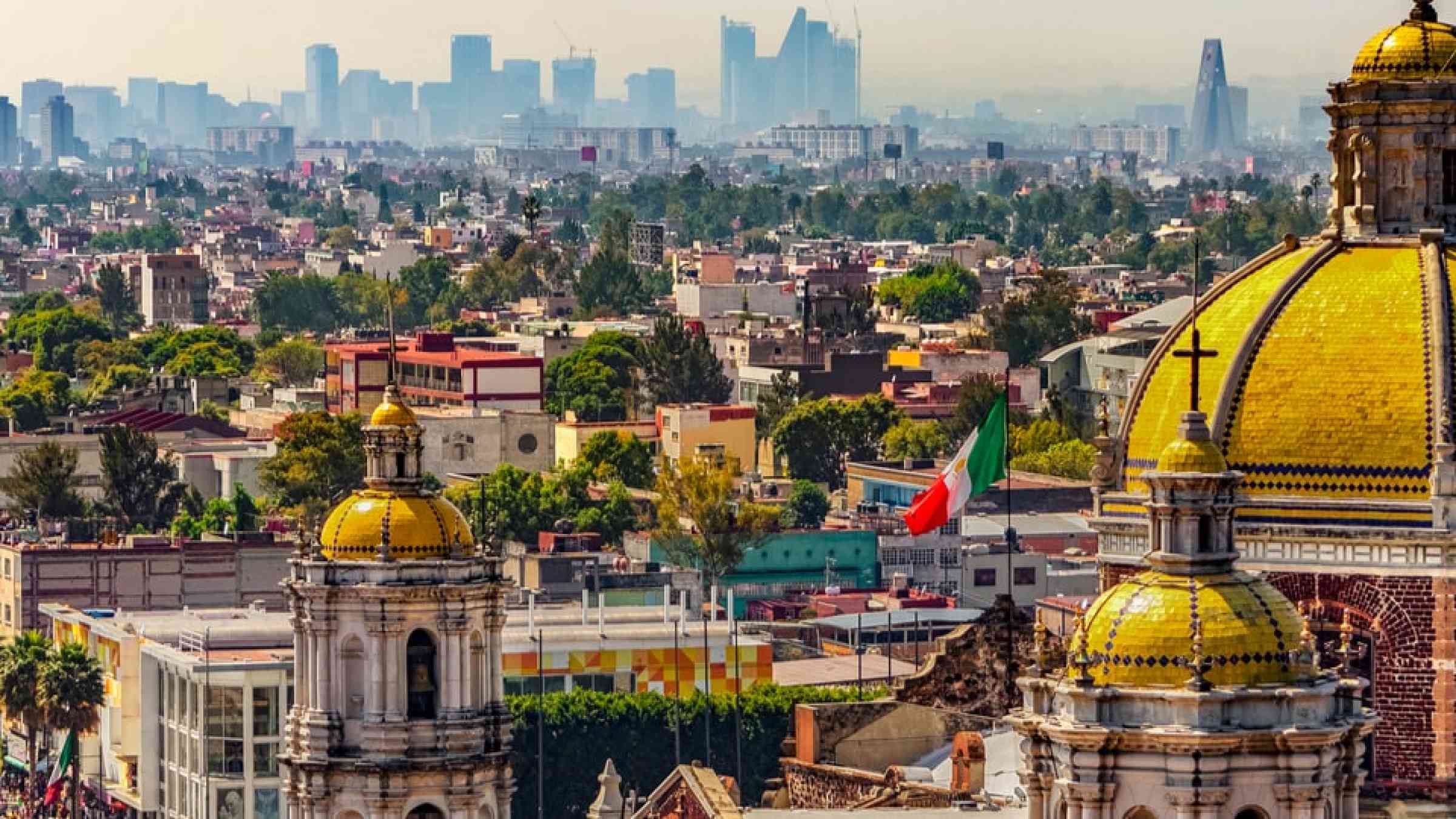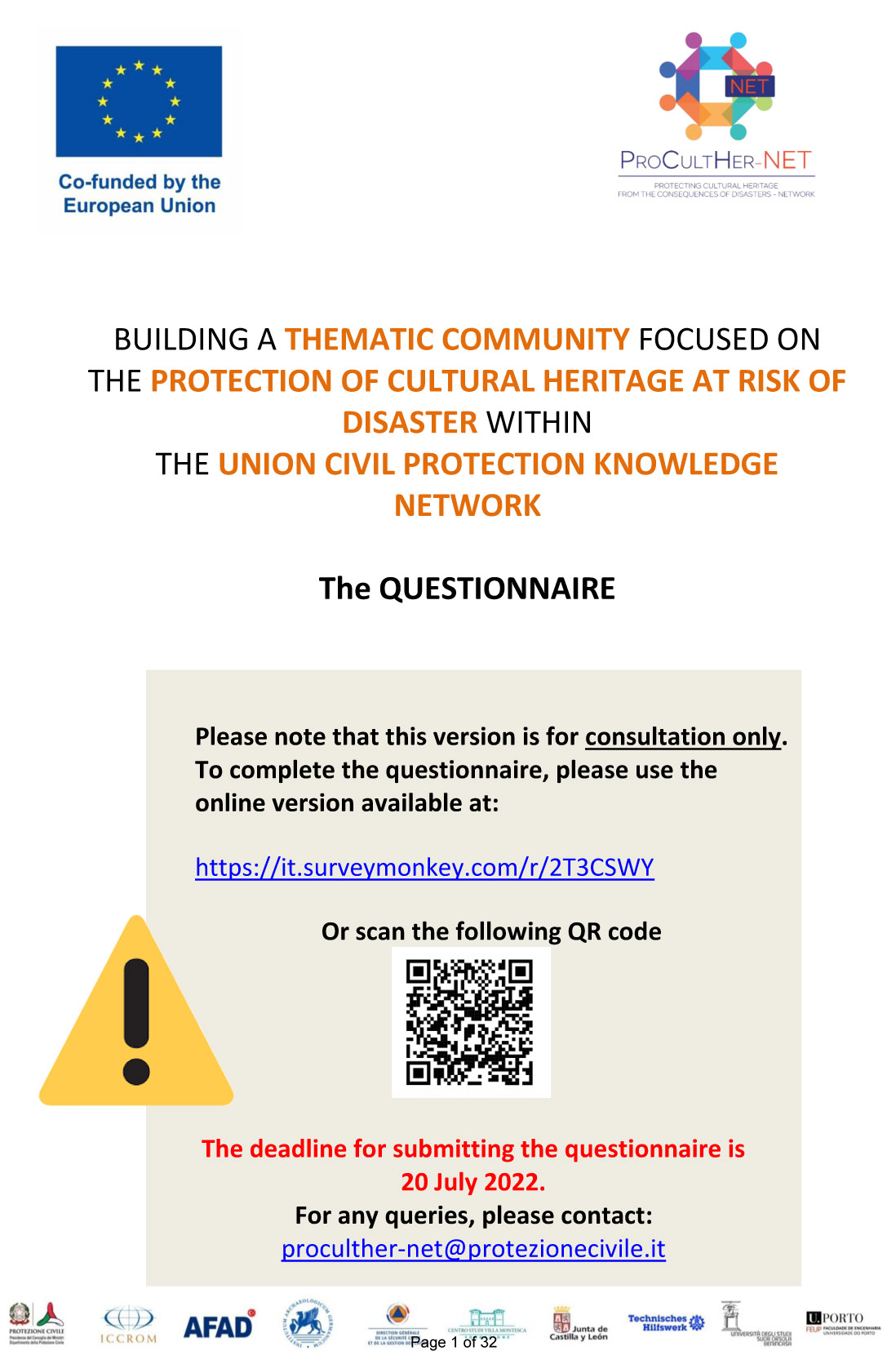Please help us improve PreventionWeb by taking this brief survey. Your input will allow us to better serve the needs of the DRR community.
PROCULTHER-NET laying the foundations of a cultural heritage protection community

Basilica in Mexico City

The PROCULTHER-NET Consortium is launching a questionnaire to facilitate the identification of the contents and processes on which to build the experience of a cultural heritage protection community within the Knowledge Network.
The questionnaire, elaborated by the Suor Orsola Benincasa University - UNISOB in close cooperation with the other PROCULTHER-NET Partners, was circulated to the different contact points of the UCPM Member and Participating States, as well as to other relevant actors active in the field of cultural heritage protection. However, to guarantee that full feedback - both in the field of disaster risk management and cultural heritage protection - are reflected and represented within the KN, the target audience of the questionnaire aims at a broader public to include the involvement of civil protection/disaster risk management authorities and the main cultural affairs actor (e.g., Ministry of Culture/Cultural Affairs). At the same time, for a consistent and comprehensive identification of new actors and stakeholders, all interested actors (universities, regions, municipalities, NGOs, etc.) having case studies to share at European level and interested in participating in the KN are free to fill in the questionnaire.
Around 60 questions will address specific topics taking in consideration tools, methods, procedures related to the following elements:
- Prevention, all those activities and measures to avoid existing and new disaster risks,
- Preparedness, that is the knowledge and capacities developed by governments, response and recovery organizations, communities and individuals to effectively anticipate, respond to and recover from the impacts of likely, imminent or current disasters,
- Response, the actions taken directly before, during or immediately after a disaster in order to save lives, reduce health impacts, ensure public safety and meet the basic subsistence needs of the people affected,
- EU Civil Protection Knowledge Network and Thematic Community.
The questionnaire will facilitate stakeholder mapping and will help to collect information and feedback on legal frameworks, policies and planning, the role and involvement of the scientific community and technical resources, international exchanges and support, tools and resources to ensure the protection of cultural heritage assets, training programmes and exercises, including communication to the public on cultural heritage protection.
Furthermore, all participants are strongly encouraged to provide any comment or suggestion on criteria and elements that can serve to build a sustainable and effective cultural heritage protection focused thematic community within the KN.
Questionnaire findings will merge in the PROCULTHER-NET ex-ante feasibility study that will guide project activities for the months to come as it is aimed at collecting information on 3 fundamental fields:
- Interests and needs existing at European level to ensure the inclusion of the protection of cultural heritage at risk of disaster in disaster risk management.
- Capacities, as well as best practices and lessons learnt existing at European level to ensure the inclusion of the protection of cultural heritage in disaster risk management processes.
- Stakeholder mapping relevant for the objectives of the project, including civil protection and cultural heritage authorities, academia/scientific centers as well as international and humanitarian organizations.
Are you ready to lay the foundations of the Cultural Heritage protection community within the KN?
Access its consultable version to read all the questions to prepare your answers.
To fill in the questionnaire by 20 July 2022, scan de QR code available in the questionnaire cover.
Explore further
Please note: Content is displayed as last posted by a PreventionWeb community member or editor. The views expressed therein are not necessarily those of UNDRR, PreventionWeb, or its sponsors. See our terms of use
Is this page useful?
Yes No Report an issue on this pageThank you. If you have 2 minutes, we would benefit from additional feedback (link opens in a new window).